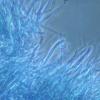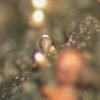
12-12-2025 18:39
Mirek GrycHello everyone.Macrofeatures similar to Mollisia b

09-12-2025 12:06
 Andgelo Mombert
Andgelo Mombert
Bonjour,Je recherche l'article concernant Hypobryo

07-12-2025 16:07
Arnold BüschlenHallo, ich habe in einer Moos-Aufsammlung (epiphy

08-12-2025 21:04
Mark Stevens"Hello everyone,I'm relatively new to microscopy (

08-12-2025 18:59
 Lothar Krieglsteiner
Lothar Krieglsteiner
.. found by a seminar-participant, I do not know t

08-12-2025 17:37
 Lothar Krieglsteiner
Lothar Krieglsteiner
20.6.25, on branch of Abies infected and thickened

16-03-2014 22:00
Hello,I found this species a few months ago but ha

08-12-2025 13:39
Thomas Læssøehttps://svampe.databasen.org/observations/10572899
It occurs on exudate of wounds of Prunus pensylvanica in PEI and NB Canada.
The ascomata are about 200-400 um tall and 150-200 um wide, and urceolate in shape. The walls are light brown and become melanized as it matures. Internally, the walls consist of linear, periclinally arranged hyphae. The asci are narrowly cylindric (c. 35 x 4 um), and lack an evident apical apparatus. They break down at maturity, producing a dry mass of spores that collects around the ostiole, and within the cavity in the upper part of the ascoma. Externally, the spore mass appears white to very pale yellow. The ascospores are uniseriately arranged, 8 per ascus, colourless, unornamented, and c. 3-4 x 2-3 um. They are ellipsoidal, but slightly compressed on the long axis.

